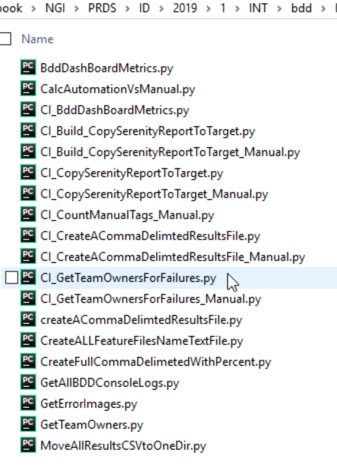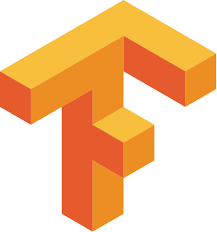As a modern tester, I know you would probably say that Java is your popular choice for crafting automated tests.
But my favorite is Python.
So, let me introduce you to the world of Python automation tools – a game changer in the testing landscape.
In this comprehensive guide, we'll explore my favorite 22 incredible Python libraries that showcase this dynamic language's remarkable versatility and simplicity.
From robust Python testing frameworks to cutting-edge solutions, these Python automation tools will revolutionize your testing workflows and elevate your productivity to new heights. Dive in and unlock the true potential of Python for your automated testing needs!
Here are 23 libraries you'll find in this guide for why Python is so awesome:
- Selenium
- Playwright
- Splinter
- Robot Framework
- Behave
- Requests
- Tavern
- Hypothesis
- Pywinauto
- RPA Python
- Beautiful Soup
- NumPy
- PyTest
- TensorFlow
- PDFMiner
- Pyjest
- Locust
- PyBuilder
- Pandas
- Coverage.py
- PyUnit
- PyCharm
- Faker
Why Python?
Al Sweigart, author of Automate the Boring Stuff, explained it best in episode 54 of my weekly TestGuild automation podcast.
Python has always been his language of choice because:
-
- It has a gentle learning curve.
- It works on Windows, Linux, and MAC.
- It's still a serious programming language that professional developers use.
- It says “Hello world” in one line, unlike Java, where you sort of have to remember the public, static, void, string, ban, bracket, etc.
- Easy-to-remember syntax
- It doesn't force you to learn object-oriented programming.
Python code is very concise, kind of like Perl, except readable—unlike Perl.
So what are some of the best Python libraries you can use to help you with your testing and automation efforts?
For Functional Python Test Automation
The following are a few of my past interviewees’ favorite Python automation libraries and a few that I've found helpful.
1) Selenium
Of course, you have the Selenium-Python binding for browser UI automation.
This Selenium package is used to automate web browser interaction from Python.
Selenium is the industry standard when it comes to browser-based automation.
This is a perfect option if your team comprises mostly test engineers with development skills or SDETs.
2) Playwright
Did you know that you can now write automated tests using Playwright as a Python automation tool?
Discover the incredible potential of Python automation with Playwright's official Pytest plugin, your go-to solution for crafting exceptional end-to-end tests. This powerful plugin delivers unparalleled context isolation and supports multiple browser configurations immediately, making your testing process a breeze.
Not a fan of Pytest? No problem! Playwright's versatile library allows you to handcraft your testing infrastructure using your chosen test-runner. Plus, the plugin is based on Playwright's synchronous version, but fear not – an asynchronous alternative is also readily available via the library. Explore the endless possibilities with Playwright and elevate your Python automation game today!
3) Splinter
A cool wrapper-type library for Selenium in Python is Splinter.
Splinter is an open-source tool for testing web applications using Python. It lets you automate browser actions like visiting URLs and interacting with their items.
It makes writing Python Selenium tests easier because it has a high-level API that makes it easy to develop automation test scripts for your browser applications.

4) Robot Framework
If you want to use Python for test automation, you can't go wrong with the Robot Framework. This mature product, created for testers, uses a keyword-driven approach to make tests readable and easy to create.
It also includes a bunch of test method libraries and other tools. The Robot Framework is Python-based, but you can also use Jython (Java) or IronPython (.NET).
While the Selenium WebDriver library might be the most-used external test library, Robot Framework can also test other things like:
-
- FTP
- MongoDB
- Android
- Appium
- APIs
- Mainframes
- Much more
Robot Framework is a great option for your automation framework if your team is mostly made up of testers.

5) Behave
How about behavior-driven development libraries?
Python has a bunch of Cucumber–like BDD frameworks to choose from. The most popular one is probably Behave. It's almost identical to cucumber, but it's in Python.
6) Requests
Need to do REST API testing or any sort of HTTP activity?
Requests is an Apache2 Licensed HTTP library written in Python. This library, I believe, is one of the most popular python libraries by the sheer number of downloads. It is indispensable for your test automation efforts.

7) Tavern
Speaking of API testing, another library recommended to me by Andrew Knight, the Automation Panda, is Tavern. It makes your REST API testing much more declarative.
Tavern describes itself as a command-line tool, Python library, and Pytest plugin for automated testing of RESTful APIs, with a simple, concise, and flexible YAML-based syntax.
8) Hypothesis
A popular testing topic I've heard more about is property-based testing. If you've been wanting to try it yourself and are into Python, look at Hypothesis.
Hypothesis for property-based testing where you can test integers in a certain range and hypothesis we'll crank through all sorts of variations for you automatically. So it helps to find edge cases in your test code you probably wouldn’t have thought to look for.
9) Pywinauto
For non-browser-based functional automation, give pywinauto a try.
pywinauto is a set of Python modules you can use to automate Microsoft Window GUIs.
You can use it to send keyboard and mouse actions to Windows dialogs and controls. It also supports more complex operations, like procuring text data.
10) RPA Python
Unleash the true power of Robotic Process Automation (RPA) with Python's intuitive and robust API. RPA Python transforms the mundane into an exciting adventure, allowing you to easily automate repetitive, time-consuming tasks. Whether it's conquering the web, streamlining desktop applications, or dominating the command line, this versatile Python package have you covered.
Dive into the world of RPA for Python and discover how its simple yet powerful API can revolutionize your automation journey, making it productive and enjoyable. Say goodbye to monotony and hello to a more efficient, fun-filled approach to RPA with Python!
What's cool about RPA automation is you can quickly automate a bunch of different cross-platform processes like:
-
- Browser automation
- PDF manipulation
- File and folder manipulation
- Email operations
- Word and Excel automation
- Tons more
How about automating other activities that are not functional testing related?
When I say “automation,” I mean functional test automation and any activity that can help you speed up your software development process.
11) Beautiful Soup
Beautiful Soup is one of the Python libraries I use for pulling data out of HTML and XML files.
Although the main test framework I use is Java-based, I have a directory in my framework that includes all kinds of Python helper scripts—most of which leverage Beautiful Soup.

For example, I have some scripts that help me parse my Serenity automation test framework reports quickly.
It's also great for web scrapping. If you have a simple static webpage where you need to find some small bit of information buried somewhere in the HTML, Beautiful Soup is your library of choice.
You can use the requests library to help you download the webpage itself, and Beautiful Soup will help you parse it.
12) NumPy
During my interview with Brain Okken, the host of the Python–based podcast Test & Code, he named NumPy as his Python library of choice for things like electrical engineering testing.
NumPy is the fundamental package for scientific computing with Python.
13) PyTest
According to Andrew Knight, pytest is one of the best test automation tools in any language.
One reason is that it is so concise and focused on the tests. In pytest, you write test functions– not test classes– test functions. And if you want to do set and clean up, you write other functions that are tagged as fixtures, and you can declare them in a dependency injection way.
So the fixtures will be automatically called based on their scope, and whatever they return gets injected into your test functions. This makes setup and cleanup much more scalable and reusable.
Brian also mentioned that although it might take you a while to wrap your head around pytest fixtures, it's well worth the effort because they're extremely powerful. If you are new to Python testing, pytest is a must-learn library.
*Make sure to check out Brian's book Python Testing with pytest: Simple, Rapid, Effective, and Scalable to learn all about it.

14) TensorFlow
If you've been following the latest news in the automation space for the past few years, you know how much of a hot topic artificial intelligence is.
TensorFlow is a Python library created and released by Google for fast numerical computing. It’s a foundation library that can be used to create Deep Learning models directly or by using wrapper libraries that simplify the process built on top of TensorFlow.
TensorFlow was actually one of the libraries that Tariq King used to create Ultimate Software’s Python-based, open-source AI generation and exploratory testing tool Agent and AgentX.
15) PDFMiner
How many times have you found yourself needing to test the content of a PDF?
I was actually surprised to find out how many Python modules there are for interacting with a number of different technologies, like Excel files or parsing PDF files.
If you need to test or validate PDF text content, you may find PDFMiner helpful. This library is basically a text extraction tool for PDF documents.

16) Pyjest
Have you heard of the unit-level, automated testing framework called Jest?
Created by Facebook, it has features that make it easier to perform test-driven development; for instance, its interactive watch mode, which you can use to improve workflows.
It's also intelligent enough to know which tests to run that are relevant to the files you've changed since your last commit to your code repository.
This feature is super helpful if you have hundreds (or even thousands) of tests that take a long time to run, since it will run only those that are relevant to your changes.
Kent C. Dodds turned me on to a Python-based implementation of Jest called pyjest. Although it's still considered to be in the experimental stage, it has all of the same watch mode features that Kent favors.
17) Locust
Looking to add some performance tests to your Python scripts?
Locust is a simple-to-use, Python-based load-testing tool.
Locust can also help you figure out how many concurrent users a system can handle.
Some of the cool features you get with Locust are:
-
- The ability to create your test scenarios using straight Python
- The ability to quickly scale the number of users you need to emulate
- A friendly, Web-based UI Extensible
- Good for testing APIs
18) PyBuilder
PyBuilder is a software build automation tool written in Python that mainly targets Python programs.
Its website says that it's based on the concept of dependency-based programming, but it also comes with a powerful plugin mechanism that allows the construction of build life cycles similar to those found in build tools like Apache Maven.
19) Pandas
Pandas is an open-source, BSD-licensed library providing high-performance, easy-to-use data structures and data analysis tools for the Python programming language.
Ravi Salunkhe, a Test Architect connection of mine on LinkedIn, highly recommends it.

The problem pandas solves based on information on their website, is “Python has long been great for data munging and preparation, but less so for data analysis and modeling. pandas helps fill this gap, enabling you to carry out your entire data analysis workflow in Python without switching to a more domain-specific language like R.”
20) Coverage.py
Coverage.py is a tool for measuring code coverage of Python programs.
Kyle Tice recommended this library in the comments: “Coverage.py is one of the most popular test code coverage tools for Python. It uses code analysis tools and tracing hooks provided in the Python standard library to measure coverage. It runs on major versions of CPython, PyPy, Jython, and IronPython. You can use Coverage.py with both unit test and Pytest”
Their website mentioned that it monitors your program, noting which parts of the code have been executed, then analyzes the source to identify code that could have been executed but was not. Coverage measurement is a good way to gauge the effectiveness of your tests. This tool will show which parts of your code are being exercised by tests, and more importantly, which are not.
21) PyUnit
Francesco Piscani on LinkedIn mentioned that if you come from the Java world and are used to camelCasing, you might find UnitTest (PyUnit) an easy transition to the Python ecosystem.

PyUnit is an easy way to create unit testing programs and UnitTests with Python.
22) PyCharm
Ok not sure how I missed adding my favorite IDEs to this list, but Daryl Flowers on LinkedIn reminded me it would be good to add.
If you are used to using Java for automation testing, you are probably familiar with JetBrain's IntelliJ. For Python, they also make an awesome Python-specific IDE for professional developers called PyCharm.
<h2id=”P22″>Faker
Have you ever had to automate an application that required unique data for every test run?
It can be a pain. That's where Faker comes in.
23) Faker
Faker lets you dynamically create real-looking data like names, phone numbers, addresses, SSN — all kinds of stuff. This is really handy when you need to create automated tests.
Most language bindings have one, but for Python, check out Joke2k's Faker on GitHub. This Python Faker package can be used to generate fake data for you.
What Python Automation Testing Tools Did I, Miss
These are just a few of the Python based-libraries I’ve used or have recommended to me.
What did I miss?
Let me know, and I’ll add it/them to the list.






This is a solid list Joe. A colleague of mine just pointed out this gem of a tool which is a code coverage tool in Python that we are currently sharing with some of our developers: write up by sealights: Coverage.py is one of the most popular code coverage tools for Python. It uses code analysis tools and tracing hooks provided in Python standard library to measure coverage. It runs on major versions of CPython, PyPy, Jython and IronPython. You can use Coverage.py with both unittest and Pytest https://coverage.readthedocs.io/en/v4.5.x/
https://media0.giphy.com/media/d2Z9QYzA2aidiWn6/giphy.gif
Pyspark library for big data testing
Wow. We actually already use quite a lot in our automation stack.
Another great addition for this list would be Faker (https://faker.readthedocs.io/en/master/#). We use is to generate (loads of) (random) test data
I will not agree, that python is good language for writing automation. All pythonist say “it so easy to learn…” and I dont want developers that learned python in 2 weeks will work in my organization, I need good OOP specialists. Python is programming language that gives you posibility to do so many thing in wrong way, and many unexpirienced automation developers do them all. I saw so many projects that were thrown to trash, because maintabilty of them was so expensive in reason of described issues. Python is very powerfull, and ahould be used by expirienced software developers
You can add ChroPath as well. ChroPath supports to save lot of manual effort while writing automation script.
Download link-
https://chrome.google.com/webstore/detail/chropath/ljngjbnaijcbncmcnjfhigebomdlkcjo